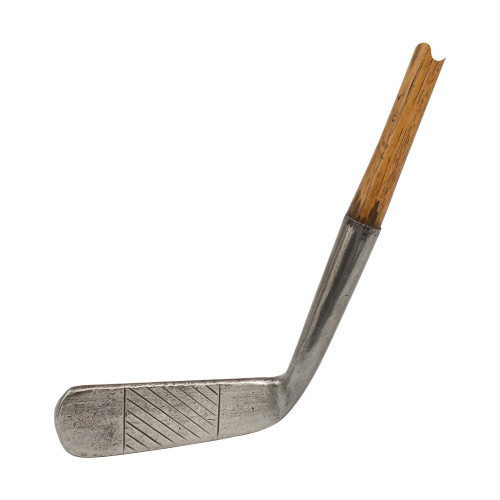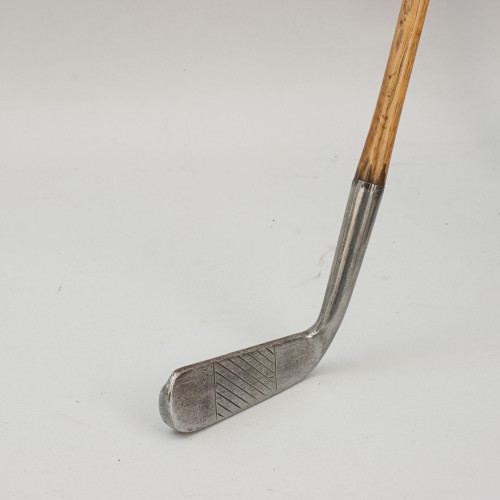- Home
- Artists & Makers
- Andrew Herd Scott
Andrew Herd Scott

1875
Andrew Herd Scott was born on 29th September 1875 in Kilconquhar, Earlsferry. He apprenticed as a clubmaker under his uncle, George Forrester - a respected craftsman in his own right. Records suggest that Scott established his own business in Elie in 1894 at the age of just 19. Prior to that, he also worked for Charlie Hunter in Prestwick, another accomplished maker of fine long-nosed clubs stamped "C. Hunter." Scott had an older brother, James, who also trained in clubmaking before emigrating to Australia. The family also included four sisters. In addition to his craftsmanship, Scott was a talented golfer. He placed seventh in the 1896 Open Championship and sixth in 1903. When Harry Vardon visited Elie to play a two-round exhibition match against him, a crowd of 3,000 turned out to watch. Vardon won decisively, 10 and 9, but the scale of the event spoke to Scott's reputation and local following. Though a capable teacher of the game, it was in clubmaking that Scott truly made his mark. He was awarded a British patent (No. 21,444) on 12th November 1895 for his innovative "Unbreakable Neck" golf club. The design featured a forked splice neck joint in which the shaft extended through the neck and into the sole, enhancing both durability and balance by aligning the shaft more directly with the centre of the head. Scott is also known for his "Straight Line" putter (registered in 1899, Reg. No. 349407) and his "Invincible" cleek. The latter was a novel design with a rounded sole
Andrew Herd Scott was born on 29th September 1875 in Kilconquhar, Earlsferry. He apprenticed as a clubmaker under his uncle, George Forrester - a respected craftsman in his own right. Records suggest that Scott established his own business in Elie in 1894 at the age of just 19. Prior to that, he also worked for Charlie Hunter in Prestwick, another accomplished maker of fine long-nosed clubs stamped "C. Hunter." Scott had an older brother, James, who also trained in clubmaking before emigrating to Australia. The family also included four sisters. In addition to his craftsmanship, Scott was a talented golfer. He placed seventh in the 1896 Open Championship and sixth in 1903. When Harry Vardon visited Elie to play a two-round exhibition match against him, a crowd of 3,000 turned out to watch. Vardon won decisively, 10 and 9, but the scale of the event spoke to Scott's reputation and local following. Though a capable teacher of the game, it was in clubmaking that Scott truly made his mark. He was awarded a British patent (No. 21,444) on 12th November 1895 for his innovative "Unbreakable Neck" golf club. The design featured a forked splice neck joint in which the shaft extended through the neck and into the sole, enhancing both durability and balance by aligning the shaft more directly with the centre of the head. Scott is also known for his "Straight Line" putter (registered in 1899, Reg. No. 349407) and his "Invincible" cleek. The latter was a novel design with a rounded sole
edge, rather than the traditional sharp edge, reducing turf damage and ball scuffing. Scott's reputation earned him a prestigious appointment as clubmaker to HRH the Prince of Wales, later King George V. Following his succession of Robert Forgan in this royal role, Scott was granted the use of the Prince of Wales's plume of three feathers. Upon the Prince's accession to the throne, Scott adopted a crown as his cleek mark, signifying his status as clubmaker to the King.
3 ITEMS
Please create wishlist to add this item to






